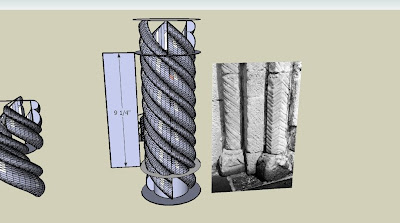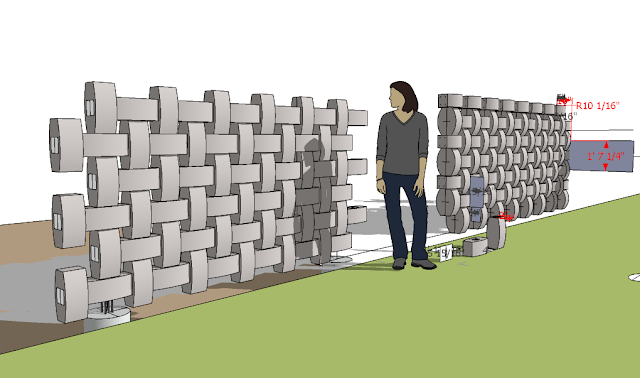Continuation
As part of my progress with moldmaking I have taught myself how to use a three-dimensional drawing program, Google Sketchup. After nine months I feel that I have yet to learn some shortcuts, certain that I will stumble upon them soon, but I have used it to try and illustrate what type of work of which I am interested in, re-applying it faithfully as an architectural style from an historic period.
In particular I gravitate towards the Romanesque period, and find the Hibernian influence upon Norman architecture the most interesting for its ability to evoke the organic into its form.

I plan on incorporating this spiral column into the decorative element and support of a mantlepiece for a fireplace surround.
In particular I gravitate towards the Romanesque period, and find the Hibernian influence upon Norman architecture the most interesting for its ability to evoke the organic into its form.

I plan on incorporating this spiral column into the decorative element and support of a mantlepiece for a fireplace surround.

i sitll havent figured out all the ins and outs of ggogle sketchup, but it seems to be a very useful too. it helped me figure out to build some chandeliers i designed.
ReplyDeletewhen you finish making your molds, do you cast them in resin?
To make the master model the short answer is yes. I use amorphous silicate and gel coat for a face mix, stuff you can find in an automotive body shop. Then I back that up with fiberglass and polyester resin. It distorts a little, but there are things one can do to counter effect it. With computer assisted machining (CAM) one can now mill what ever one wants out of high density polyurethane foam on a cnc three-axis router, but I'm not to that level yet.
ReplyDeleteFor now I am working with industrial body-styling clay (Chavant) overlaid on stryofoam. I spray a plaster mix over that when I'm done, which pops right off, since the clay is oil based. I'll be posting a design for a radiant fluid-heated table that I drew up today for just that purpose.
Thanks for the comment.